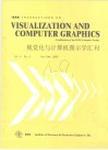版权所有:内蒙古大学图书馆 技术提供:维普资讯• 智图
内蒙古自治区呼和浩特市赛罕区大学西街235号 邮编: 010021

作者机构:Tianjin Univ Coll Intelligence & Comp Tianjin 300072 Peoples R China Fraunhofer Inst IAIS D-53757 St Augustin Germany Univ Bonn D-53012 Bonn Germany Zhejiang Univ State Key Lab Cad&CG Hangzhou 310058 Peoples R China City Univ London London EC1V 0HB England
出 版 物:《IEEE TRANSACTIONS ON VISUALIZATION AND COMPUTER GRAPHICS》 (IEEE可视化与计算机图示学汇刊)
年 卷 期:2020年第26卷第4期
页 面:1789-1806页
核心收录:
学科分类:0808[工学-电气工程] 08[工学] 0835[工学-软件工程]
基 金:National Natural Science Foundation of China [61602340, 61572348, 61772456, U1609217] National 973 Program of China [2015CB352503] National Key R&D Program of China [2018YFC0809800] EU [700692, 780754, 654024] DFG (German Research Foundation) [SPP 1894] Fraunhofer Cluster of Excellence on "Cognitive Internet Technologies"
主 题:Task analysis Semantics Visualization Time measurement Data visualization Complexity theory Aggregates Spatiotemporal visualization semantic visualization data cube interactive exploration visual analytics
摘 要:We propose an approach to analyzing data in which texts are associated with spatial and temporal references with the aim to understand how the text semantics vary over space and time. To represent the semantics, we apply probabilistic topic modeling. After extracting a set of topics and representing the texts by vectors of topic weights, we aggregate the data into a data cube with the dimensions corresponding to the set of topics, the set of spatial locations (e.g., regions), and the time divided into suitable intervals according to the scale of the planned analysis. Each cube cell corresponds to a combination (topic, location, time interval) and contains aggregate measures characterizing the subset of the texts concerning this topic and having the spatial and temporal references within these location and interval. Based on this structure, we systematically describe the space of analysis tasks on exploring the interrelationships among the three heterogeneous information facets, semantics, space, and time. We introduce the operations of projecting and slicing the cube, which are used to decompose complex tasks into simpler subtasks. We then present a design of a visual analytics system intended to support these subtasks. To reduce the complexity of the user interface, we apply the principles of structural, visual, and operational uniformity while respecting the specific properties of each facet. The aggregated data are represented in three parallel views corresponding to the three facets and providing different complementary perspectives on the data. The views have similar look-and-feel to the extent allowed by the facet specifics. Uniform interactive operations applicable to any view support establishing links between the facets. The uniformity principle is also applied in supporting the projecting and slicing operations on the data cube. We evaluate the feasibility and utility of the approach by applying it in two analysis scenarios using geolocated social media da